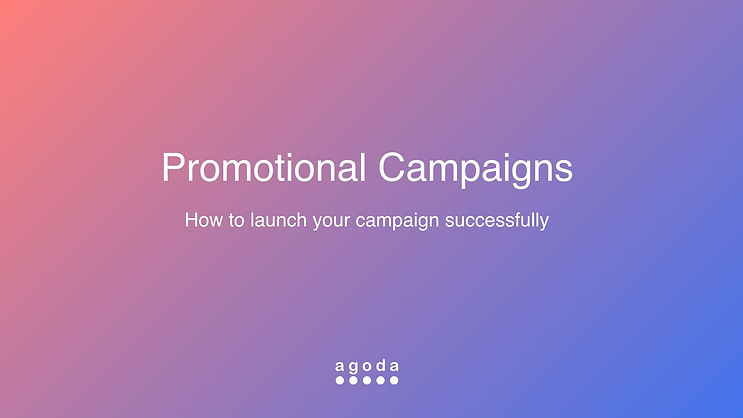Agoda Promotions
Framework
A framework to make it easier to go live with promotions to meet our business needs.
A promotion is a limited time event that affects the design of any or all of our site/app, is for a segment or all of our users, and requires collaboration between marketing, copy writing, finance, and the designer and product owner responsible for the promotion PLUS the lead designer for each page the promotion will live on .
Chinese new year, Golden Week, 11-11, summer break, Christmas, Eid, Family discount - are all examples of promotions we might run.
My role
-
As the segments design lead, many, if not all, of the promotions fell onto my team to execute
-
Create framework
-
Socialize the process with product owners to ensure adoption
What's wrong with the way promotions were handled in the past?
1.
They tend to be last minute due to under-estimated effort
Despite knowing that a holiday is coming up, a product owner might only request work the week before the event, and oftentimes there wasn't enough information to get started
They are always the highest priority, and they are always a scramble to complete
2.
They really are a huge team effort
A promotion requires visual design and branding, and a cohesive workflow for how it will exist. It also needs to be coordinated with copy writers and translators, approved by finance, and cross-checked with each of the velocity designers responsible for the page it will exist on to ensure that there aren't conflicting experiments

How to go about creating a framework
Pick a mental model: Catalogue
The framework mental model is inspired by a catalogue. My idea was to create a set of design options that a product owner could pick from based on what type of promotion they were doing.
Build a coalition between design pods
The demand for promotions was coming from my team, but we needed to collaborate with the marketing and velocity teams when implementing.
I hosted a series of working sessions with the velocity and marketing design leads to work together on a process that made sense, and what the contents of the catalogue should be.
Campaign architecture overview:
A simple set of wireframes demonstrates how a campaign might exist within the context of the product ecosystem: web, app, email.
Color coding communicates to the person requesting the campaign how much work will be required depending on the desired outcome.

Special elements that require visual design
Areas in the product that could accept a new graphic, but that requires time for design and revisions.
These elements should be used for very special campaigns only.
Existing UI elements requiring only copy and a color change
Very fast and easy to implement. A family sale, or a discount for Chinese destinations might be marked with a badge or unique CTA color
Clear requirements and timelines for deliverables
The catalogue specifies not only what UI options exist for a campaign, but also exactly what the design team needs to get started.
Audience
Localization: Who will get access, what language support is required
Goal: What are we trying to accomplish - brand awareness? Cultural aptitude?
Process
Timeline: Date campaign needs to go live, duration of campaign
Engagement: The design team needs 1 month for regular campaigns, 2 months for holiday or special
Unless all other design work can pause
Content
The deal: What discounts, and where the discounts apply. To a hotel chain, to an entire city, etc
Copy: Finalized and translated. Note UI elements can translate in code, custom graphics are labor-intensive
References: Provide screenshots of what our competitors are doing, or general inspiration to guide the designer during concept phase
A single catalogue lives in our design services portal and is accessible to all POs
This agreed-upon process was shared with the relevant group of Product Owners where they could ask questions and provide feedback. In the end we are able to have a clear process for campaigns that made it easier for all teams involved: product, design, engineering, and our translation and copy team.
